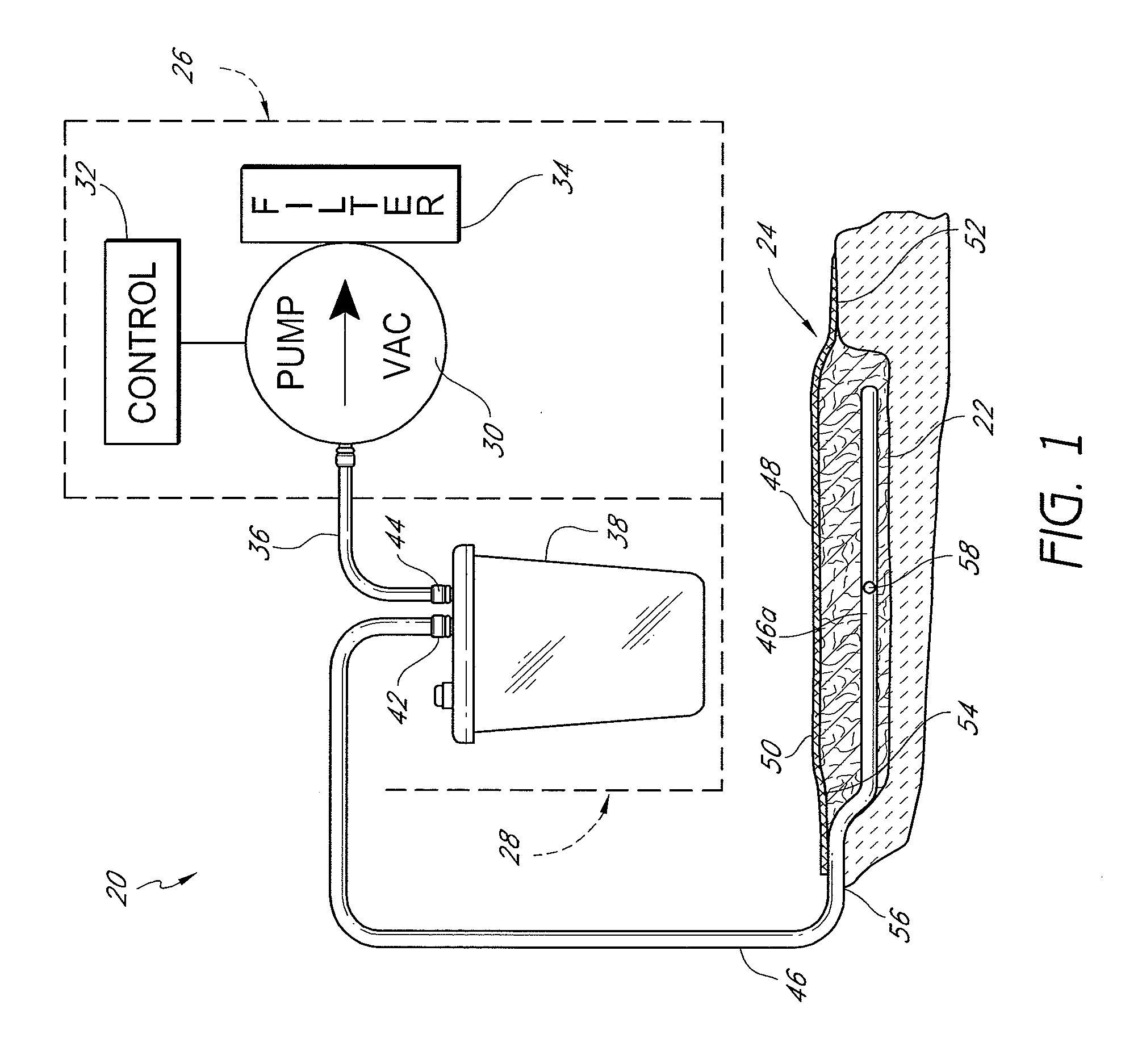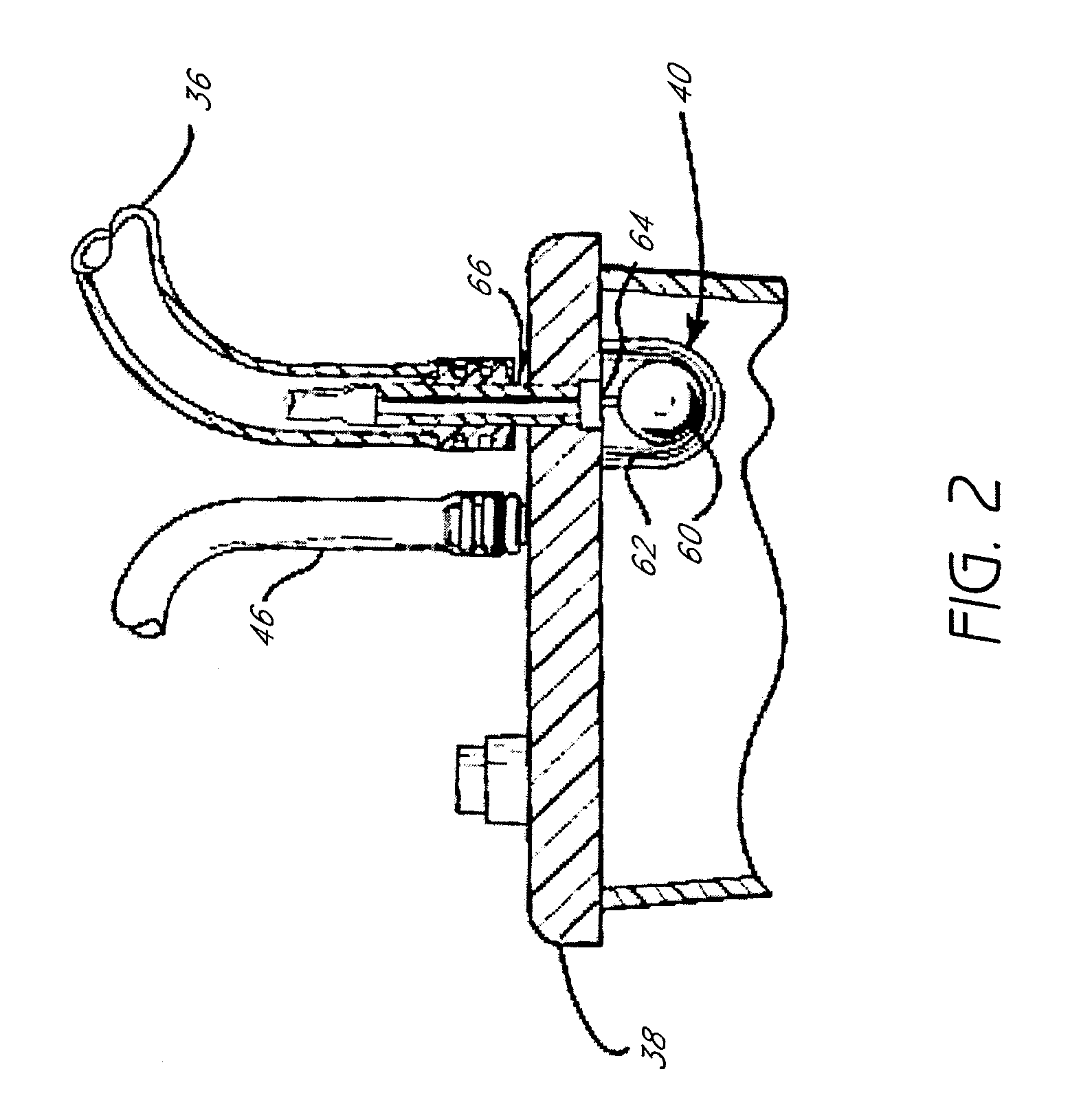Auxiliary powered negative pressure wound therapy apparatuses and methods
a negative pressure wound and auxiliary technology, applied in the direction of prosthesis, wound drain, catheter, etc., can solve the problems of large or infected wounds, inability to spontaneously close, wounds that cannot successfully fight bacterial infections, etc., to achieve high efficiency and conserve energy supply
- Summary
- Abstract
- Description
- Claims
- Application Information
AI Technical Summary
Benefits of technology
Problems solved by technology
Method used
Image
Examples
Embodiment Construction
[0011]Certain embodiments of the present disclosure relate to negative pressure wound therapy (“NPWT”), also known as suction therapy or vacuum therapy, used in a wound healing environment specifically where there is a strong need to use the system in an area where there is a need for auxiliary or backup power source beyond just alternating current or AC or direct power source from electric power source. This concept can be extended to other medical devices as well. As used herein, the phrase auxiliary power source is used to represent any source of power other than an alternating current (AC) power source.
[0012]Embodiments of the present invention address an increased need for usage of negative pressure wound therapy systems in more contemporary conditions such as mobile patients or semi-mobile patients, and in areas where there is a strong need for a usage of auxiliary power systems. Direct current DC operations, battery powers, solar powers, fusions, solar cells or any combinatio...
PUM
 Login to View More
Login to View More Abstract
Description
Claims
Application Information
 Login to View More
Login to View More - R&D
- Intellectual Property
- Life Sciences
- Materials
- Tech Scout
- Unparalleled Data Quality
- Higher Quality Content
- 60% Fewer Hallucinations
Browse by: Latest US Patents, China's latest patents, Technical Efficacy Thesaurus, Application Domain, Technology Topic, Popular Technical Reports.
© 2025 PatSnap. All rights reserved.Legal|Privacy policy|Modern Slavery Act Transparency Statement|Sitemap|About US| Contact US: help@patsnap.com



